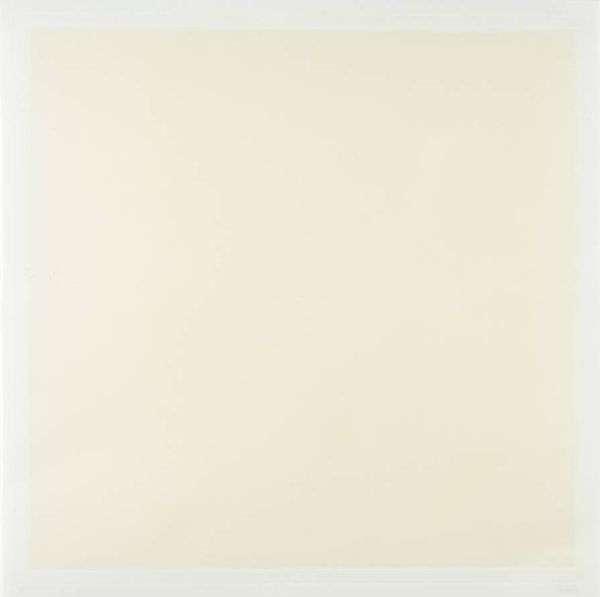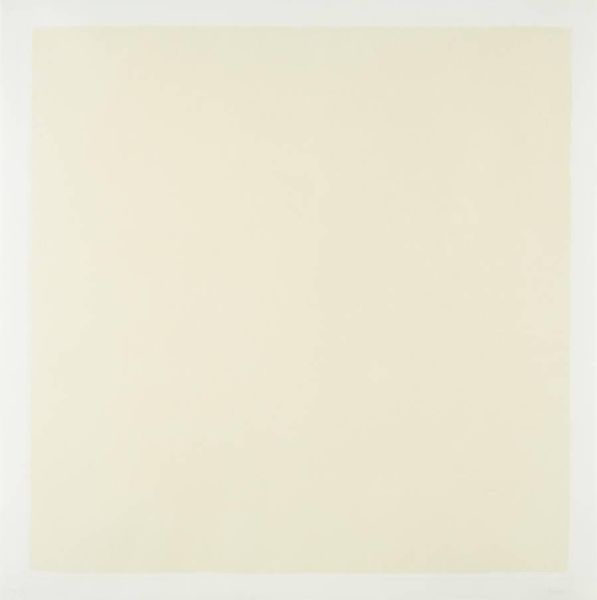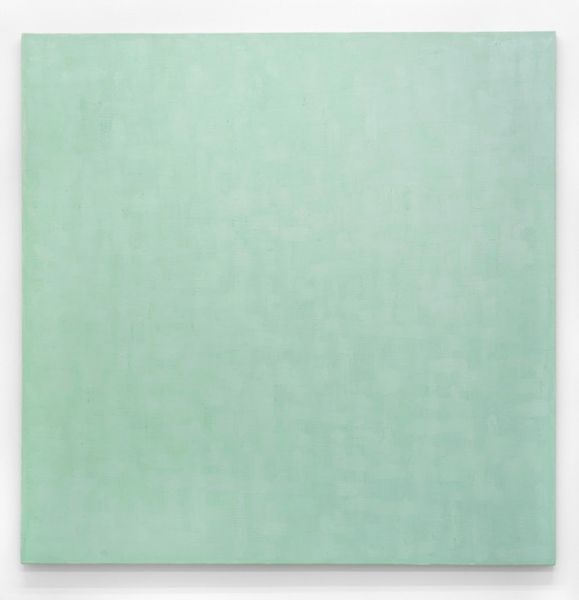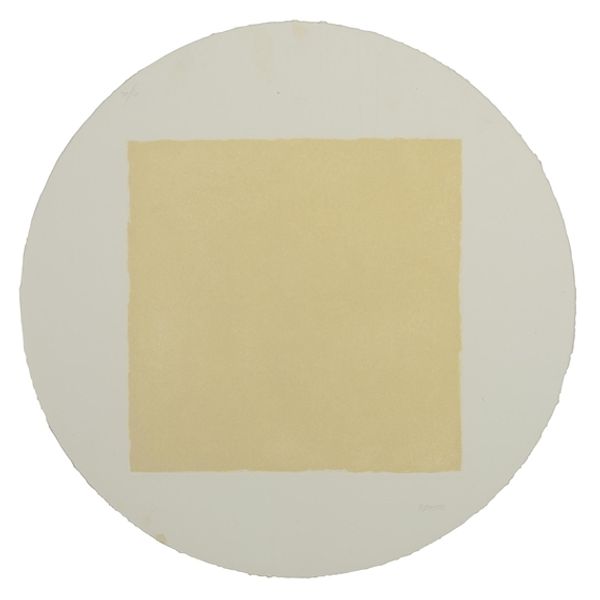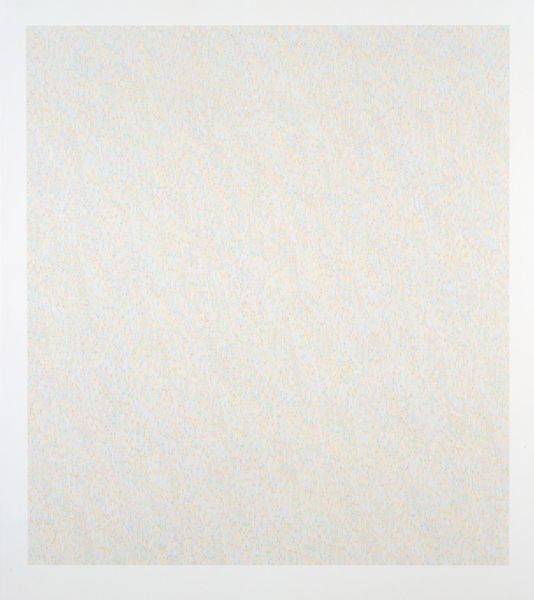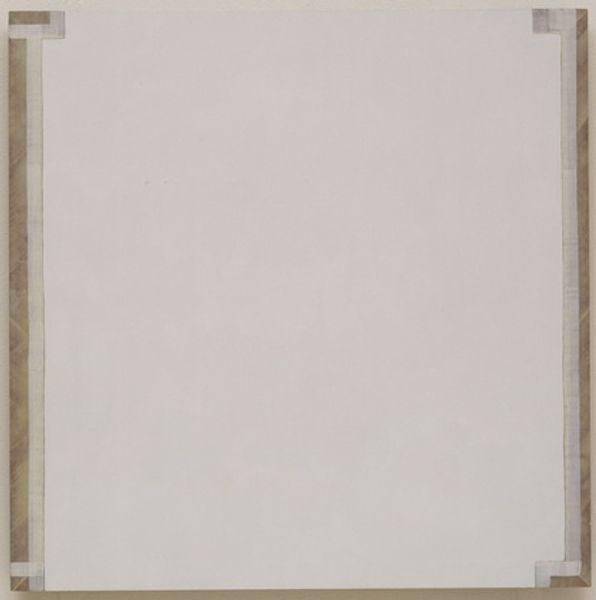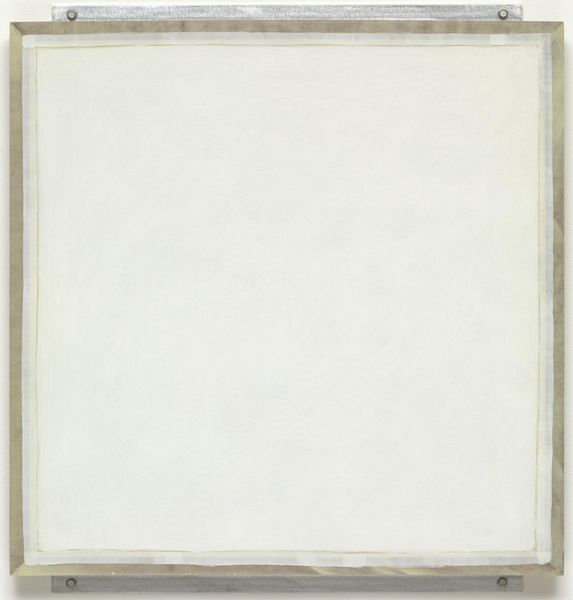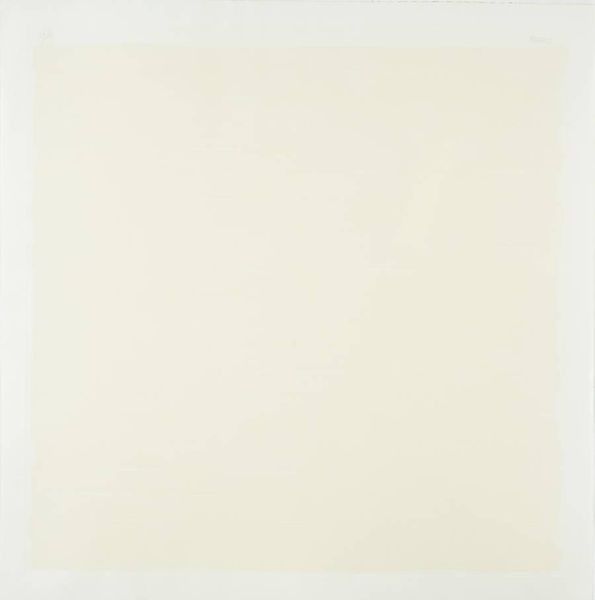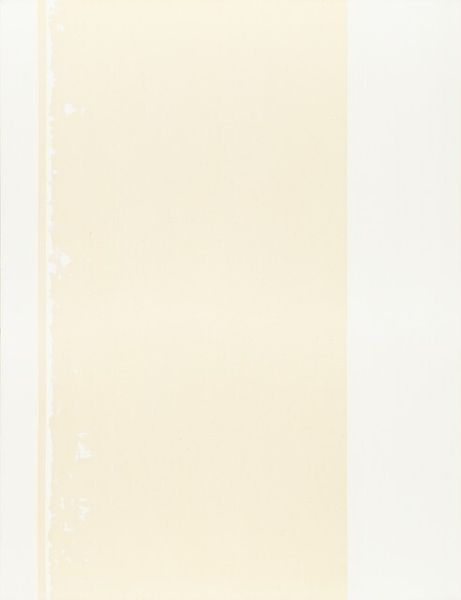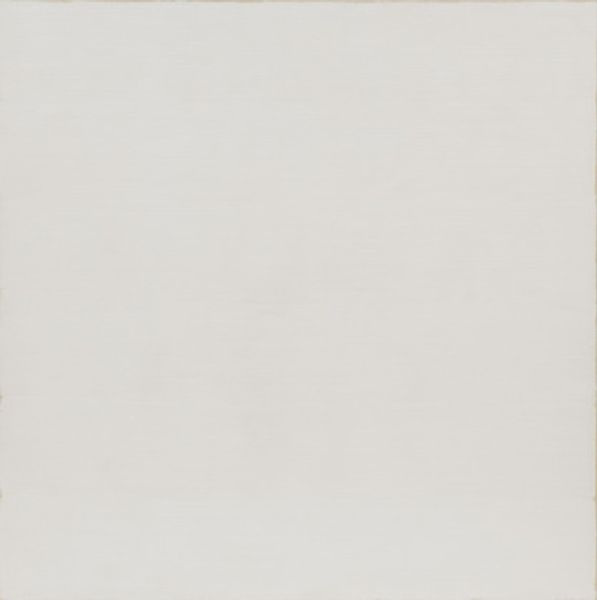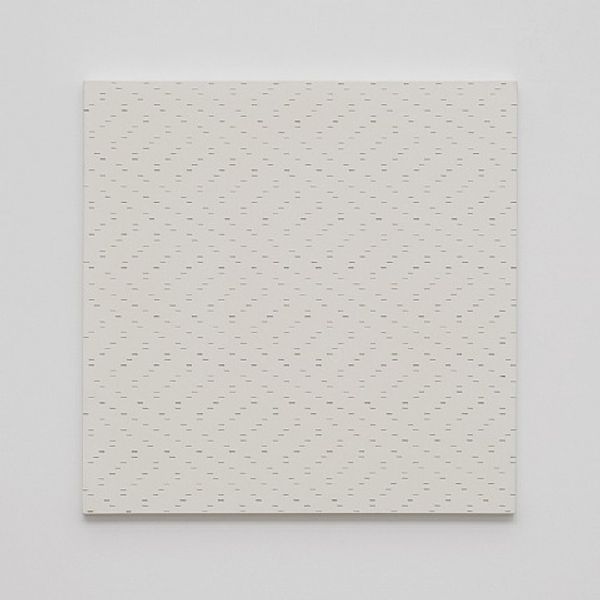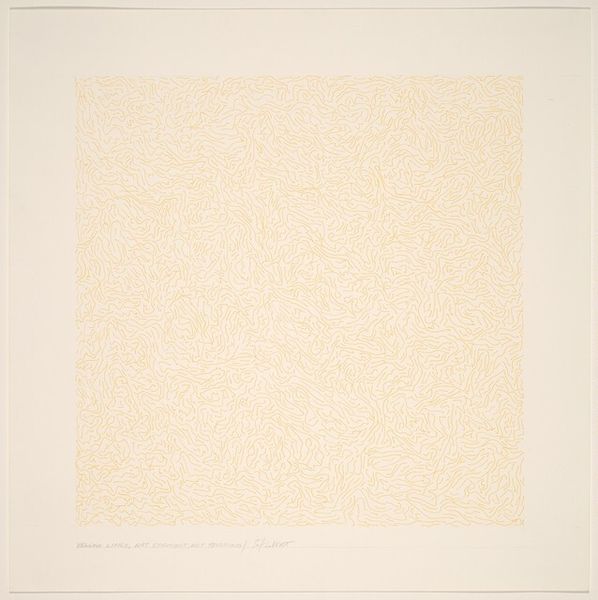
acrylic-paint
#
op-art
#
op art
#
acrylic-paint
#
geometric
#
abstraction
#
hard-edge-painting
#
monochrome
Copyright: Kuno Gonschior,Fair Use
Editor: So, this is Kuno Gonschior’s “Untitled” piece from 1973, made with acrylic paint. It's covered with what seems like countless tiny dots, creating an overall soft and subtle effect. How would you interpret a piece like this, thinking about its place in art history? Curator: Well, given the date and style, we can certainly read this as an engagement with the Op Art and Hard-Edge Painting movements. Consider the context: post-war abstraction sought to break free from representation, pushing the limits of perception and the viewer's experience. Gonschior's choice of monochrome, however soft, invites questions about seriality and industrial processes within art production, ideas prevalent during the 1970s. Editor: I see what you mean about industrial processes. It also feels incredibly meticulous. Does the "hand-made" element contrast with its mechanical appearance, or perhaps question its social status? Curator: Exactly! That tension between the handmade and the mechanically produced is crucial. Art in public spaces, accessible art that challenges existing art establishment or elite taste was gaining traction. Abstraction, despite appearing non-representational, carries its own politics. A move away from explicit socio-political representation can be interpreted as an embrace of pure visuality, but that’s another discussion altogether. Editor: This makes me think of minimalist art in public spaces and the controversy about art funding in that era. Thanks, it is a wider consideration of its context than just the surface elements I initially noticed. Curator: Indeed! Thinking about it through that historical lens really deepens our appreciation, doesn't it? There’s always a social and cultural backdrop shaping art and our responses to it.
Comments
No comments
Be the first to comment and join the conversation on the ultimate creative platform.
